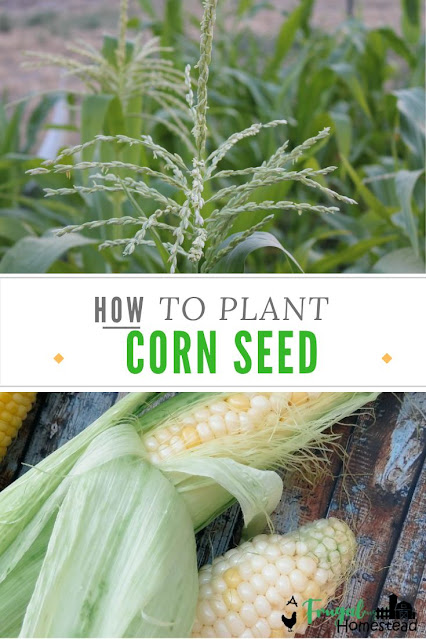How to Plant Corn Seeds
Why you should plant corn?
Corn is a good source of fiber, vitamins C and B, and minerals like potassium and magnesium. It's also relatively low in calories.
In addition to being healthy, corn is also versatile. It can be eaten on its own, used as an ingredient in many different dishes, or even popped and turned into popcorn. Plus, corn can be used as a flour or starch in gluten-free recipes.
What corn seed variety is right for your climate?
Choosing the right corn seed variety for your climate and planting zone can mean the difference between a bountiful harvest and total failure.
So what's a gardener to do? The first step is to figure out what kind of climate you have. Are you in a hot, dry region or a cooler, wetter one? You can also just google "{Your City Name} Hardiness Zone".
Your hardiness zone will help you know what planting zone you are in and what corn seed works best in your area. From there, it's simply a matter of matching up the right corn seed with your planting zone.
What type of corn seed do I need?
When looking at planting corn, it is important to know the differences between different corn seed. There are three main types of corn seed: popcorn, sweet corn, and field corn.
Popcorn is the type of corn that is typically found in movie theaters and bags of microwavable popcorn. It has a hard outer shell that helps it to pop when heated.
Field corn is the type of corn that is typically used to feed livestock. It has a lower sugar content and is generally less sweet than sweet corn. This corn is especially great for feeding chickens.
Depending on your needs you may plant none, some or all of these varieties. But most people plant sweet corn for eating and preserving.
Where to Get Seed Corn?
You can find seed corn at local farm supply stores, garden centers, and even some big-box retailers during planting season. But if you prefer to shop online, Eden Brothers is a great option—we get a lot of our seeds from them, and they always have a great selection.
Once you’ve got a solid corn crop growing, you can save seeds from your best ears to plant next season. It’s a great way to keep your garden self-sustaining and even adapt your corn to your local growing conditions over time.
How to plant corn seeds?
Growing corn is a snap! Just follow these simple steps and you'll be on your way to harvesting fresh, delicious corn in no time.
First, find a spot in your garden that gets plenty of sunlight. Corn is a warm weather crop, so it needs at least six hours of sunlight per day to thrive. Once you've found the perfect spot, it's time to get planting.
If you're starting with seed, plant the seeds about an inch deep and 6 to 12 inches apart. If you're transplanting young plants, space them out so they're about a foot apart. We often winter sow our corn in milk jug greenhouses, just to have fresh corn earlier in the season.
Once your corn is in the ground, give it a good watering.
Water corn regularly. Corn really loves water and can soak it up fast. You want a nice damp soil, but not a swamp.
When to harvest corn?
Corn is ready to harvest when the ears are plump and the husks are green.
Knowing when to harvest corn can be tricky. If you wait too long, the kernels will become tough and chewy. But if you harvest it too early, you'll be left with bland, underwhelming corn. So how can you tell when your corn is ready to be picked?
Here are a few tips:
- Look for dark green husks that are tightly wrapped around the ear of corn.
- Feel the kernels through the husk - they should be plump and firm.
- Gently peel back the husk and take a peek at the kernels - they should be glossy and full.
If you follow these simple tips, you'll be able to enjoy perfect, delicious corn all summer long!
Want to preserve your corn for eating all year long? Check out our freezer sweet corn recipe.


.jpg)
.jpg)
.jpg)
.jpg)
.jpg)

.jpg)





Comments
Post a Comment